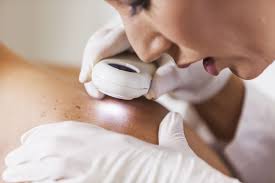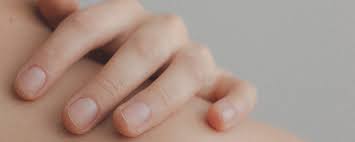Things Your Dermatologist Wants You to Know Before Booking Your Appointment
From treating blemishes and filling hollows to diagnosing skin cancer, a good dermatologist can help any patient pinpoint the underlying cause of their issues or help them with an extra boost of confidence in next to no time. But, like with any other appointment, you may leave your consultation feeling as though you haven’t gotten the most of your visit. Don’t fret: there are ways to ensure a more productive appointment. Below, tips to know before you book your next visit.
Do Your Injectable Homework
Different types of injectables address different concerns, and it’s important to understand the basics before you arrive to help facilitate a conversation with your doctor about which is correct for you.
Neurotoxins, including Botox Cosmetic, Dysport, Xeomin and newcomer Jeuveau, block nerve perceptors in the skin that create wrinkles, lines and crow’s-feet.
Hyaluronic acid fillers, such as Juvederm, Restylane, Revanesse and Belotero Balance, on the other hand, don’t “freeze” anything. Instead, they restore plumpness to aging skin by “filling” the area.
Then there are the collagen-stimulating fillers, including Bellafill, Radiesse and Scluptra Aesthetic, that work stimulate the body’s own production of collagen for a longer period of time. (Popular treatment areas include the nasolabial folds, the backs of the hands, cheeks, lips and under-eye hollows.)
Bring in Some Photos
Understanding your skin can be a tricky thing, so bringing in some helpful photographs can be a great form of documentative evidence. Some skin conditions can be sporadic, and having photos on hand can definitely show your dermatologist just exactly what is going on.
Wear Loose Clothing When You Arrive
Dermatologist appointments can take some time, so you’ll definitely want to wear comfortable clothing upon your visit. But comfort aside, wearing loose clothing also makes it much easier to remove when given a gown for skin care exams. Oftentimes, patients tend to wear tight and complicated clothing, making it difficult to perform examinations.
Never Wear Makeup
You may rely on some foundation and concealer to get you through the day, but when visiting your dermatologist, it’s highly recommended to pass on the makeup. Your physician is definitely going to want to get a closer look at your skin, so going in sans makeup can help show what’s really going on when your dermatologist isn’t around.
Remove Your Nail Polish Before Your Appointment
Aside from treating a wide variety of skin conditions, dermatologists also pay close attention to the health of your nails, especially because some skin cancers tend to form on your nail beds. To help your dermatologist get a clearer glimpse of your nails, it’s wise to remove your nail polish before arriving to your appointment.

What to Expect from Your Visit to the Dermatologist
Visiting the dermatologist is an important part of maintaining your overall health. Your dermatologist can diagnose and evaluate a range of skin conditions, including skin cancer. If you’ve just scheduled your first dermatology appointment, you may be wondering what to expect. Here’s an overview of what will happen during your visit to your City dermatologist.
Beforehand
During your dermatology appointment, you’ll want to make sure that your dermatologist can easily examine all of your skin—including the skin beneath your nails! Remove any fingernail and toenail polish, and check over your skin yourself before your appointment. This will allow you to discuss any changes in your skin with the doctor.
During the Visit
When you arrive at your dermatologist’s office, you will be directed to a private exam room. If you will be undergoing a skin cancer evaluation, you will be asked to change into a gown. Your dermatologist will ask you a series of questions and discuss your concerns with you, and then she will look over your skin. The exam itself should only take about 10 minutes. During this time, your dermatologist will evaluate any moles, discoloration, and other skin issues on your body. If anything abnormal or concerning is found, your dermatologist may recommend a biopsy.
Afterward
Depending on your skin issues, your dermatologist may recommend specific treatments or medications. If you will be undergoing treatment to address a skin problem, you’ll be able to schedule your next appointment after your exam. If your dermatologist has prescribed any medications, you will receive an explanation of how to use those medications. It will then be up to you to follow your dermatologist’s instructions for medication use and daily skincare techniques.

Other Concerns
Screening for skin cancer
This type of screening is usually in the first part of your visit to the dermatologist. The screening may last for approximately 10 minutes and includes a visual inspection of all skin areas and all possible forms of skin cancer. A mole check may include checking your private areas and your scalp. Female patients can also request for a female dermatologist to make them feel more confident and comfortable during their appointment.
Skin care routine assessment
Dermatologists also want to know your skin care routine. They will ask you questions on how you take care of your skin at night and in the morning. After listening to your answers, they will recommend the best skin care routine for you and whether you should continue with your existing regimen.
Assessment of goals in aging patients
As people age, dark spots, wrinkles, and fine lines tend to become more visible. It is important to be equipped when it comes to your skin’s needs as you age. Dermatologists will be able to recommend skin care products, certain ingredients to look for, and the best solutions depending on your age, skin issues, and lifestyle habits. Having annual visits to the dermatologist is also recommended to effectively address anti-aging goals.

Remove your nail polish
Aside from acne, skin cancer, and other skin conditions, dermatologists also need to see your nails because some types of skin cancer tend to form on nail beds. In some cases, skin rashes are caused by nail fungus. There are also moles that can be found under the nails, so make sure to remove your nail polish before your dermatologist appointment.
Showcase skin concerns through photos
Pictures of your skin problems can be a great and helpful evidence that you and your dermatologist can document. If you have taken photos of your skin issues, make sure to bring them with you on your scheduled appointment. Sporadic skin conditions can be quite tricky to describe or identify, so having pictures during your appointment can help the dermatologist understand what you are trying to explain.
Some other basic questions you should be prepared to answer:
- How long you have had acne?
- Does anything make it worse (for example, menses in females or stress)?
- Did your parents have really bad acne?
Finally, have a list of any antibiotics that caused problems for you in the past, whether it was an allergy or just a bad side effect. Antibiotics are often used for treatment of acne, and knowing off the bat which ones you can and can’t take is very helpful.
And if you are a female and are pregnant or are thinking about getting pregnant in the near future, let your doctor know, because this affects what treatments are safe for you to use.
Being prepared with all of the above information will optimize your visit and help your dermatologist choose the best treatment for you.



